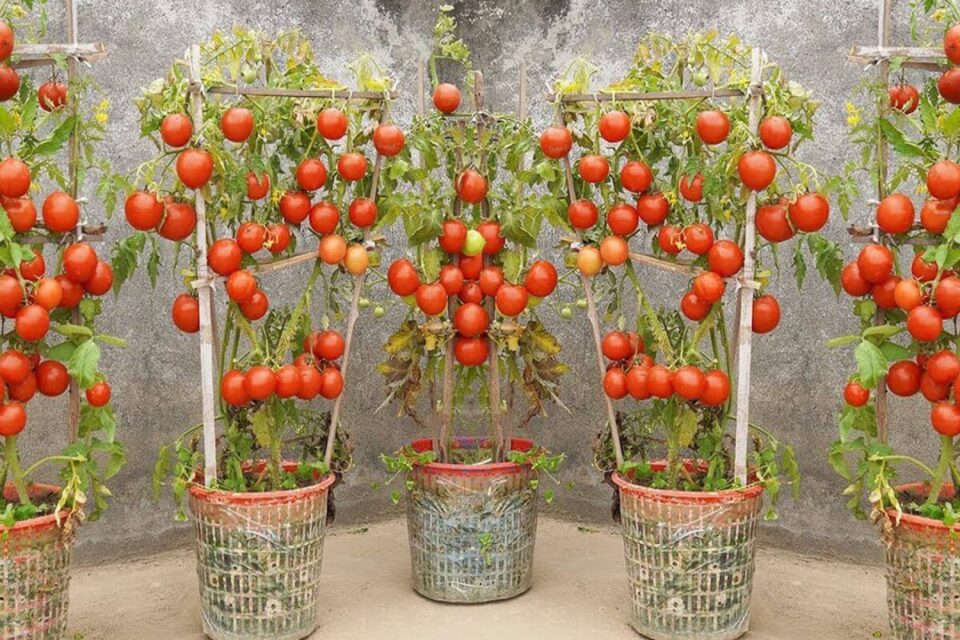Cultivating tomatoes at home is one of the most rewarding experiences for those looking for fresh, healthy and tasty foods. In addition to being a relaxing activity, the tomato plantation can bring economics and a special touch to meals. With the right techniques, it is possible to guarantee abundant harvest even in small spaces, such as compact vessels or gardens.
Why plant tomatoes at home?
Have a tomato At home it means access to fresh fruits and pesticides. In addition, domestic cultivation is sustainable, reducing waste and encourages the healthiest habits. Above all, you don’t have to be an expert to start!
Choice of seed: the first step
The choice of seeds is essential for the success of cultivation. You can opt for the seeds purchased or remove the ripe tomato seeds you already have at home. After choosing the desired variety, let the seeds dry on the paper napkin before planting.
- Tip: Variety such as Italian cherry tomatoes are excellent for beginners as they have high productivity and are more resistant.
Soil or substrate preparation
A well prepared soil is the base for healthy plants. Make sure the substrate is rich in organic matter, well drained and with pH between 6.0 and 6.8. Add organic compound or well -related manure to enrich the earth.
- For ships: Use containers with at least 30 cm in diameter and drainage holes.
- For gardens: It revolves the earth to transmit and remove stones or debris.
Seed plant
Planting the seeds correctly guarantees efficient germination. Follow this simple process:
- Plant the seeds to a depth of 1 cm on the ground or on the substrate.
- Slightly cover with the earth.
- Gently sprinkle with a spray to keep the soil wet.
- Place the vases or trays in illuminated places, with a temperature between 21 ° C and 26 ° C.
- Tip: Cover ships with transparent plastic to create a greenhouse effect and accelerate germination.
Care during growth
After germination, daily cure is essential for the healthy development of the seedlings:
- Moderate watering: Keep the soil wet, but avoid immersing yourself. Sprinkle in the morning and avoid wetting the leaves.
- Regular fertilization: Use fertilizers rich in potassium and phosphorus every two weeks.
- Tutoring: Use batteries or cages to support plants and prevent the fruits from touching the ground.
- Pruning: Remove the side sprouts (thieves) and the sick leaves to concentrate energy in the main fruits.
Seedlings
When the plants reach about 10 cm in height, it is time to transplant them in the definitive position:
- Choose a place that receives at least six hours of sunshine a day.
- Lowers enough in depth to welcome the roots.
- It burns part of the stem to strengthen the radical system.
- Keep a spacing of 60 cm between the plants.
Suggestions for an abundant harvest
- Sow fresh months: Tomato prefers slight temperatures, such as autumn or winter.
- Avoid excess water: Moderate them to avoid broken or watery fruits.
- Balanced fertilization: Avoid nitrogen -rich fertilizers as they can compromise the quality of the fruits.
- Reuse of straw: Mix the dry leaves from the plant prior to the substrate to enrich the ground.
Collection time
The collection usually occurs between 60 and 85 days after transplantation, depending on the variety chosen. Tomatoes must be stoppedWith uniform color and easy to highlight from the stem.
Benefits of the cultivation of tomatoes at home
- Healthy nutrition: Fresh fruits and pesticides.
- Economy: Reduction of market purchases.
- Sustainability: Less environmental impact when producing one’s foods.
Conclusion
The cultivation of tomatoes at home is simpler than it seems and brings numerous benefits for health, pocket and the environment. With the right dedication and care, you will have an abundant and tasty harvest directly from your courtyard or balcony.
What is the best time to plant tomatoes?
The coldest months, such as autumn and winter, are ideal for sowing tomatoes due to slight temperatures.
Can I plant tomatoes in small vases?
YES! But choose the vases of at least 30 cm in diameter to ensure enough space for the roots.
How to avoid parasites in tomatoes?
Use natural pesticides such as Neem oil or maintain good air circulation between plants.
Is it necessary to prune the tomato feet?
YES! Pruning helps to concentrate energy in the main fruits and improves air circulation in the plant.
How long does it take to the tomato harvest?
The average time is between 60 and 85 days after seedling transplantation.

